The Road to Armageddon
An Interview with Summer H. Hanford
How do you craft a journey worthy of an apocalyptic showdown? Epic Fantasy author Summer H. Hanford reveals the art of preparing characters for those fate-of-the-world battles that define the genre. Through insights from her Summer God Adventure series, Hanford uncovers the delicate balance of building tension, raising stakes, and keeping readers riveted as heroes ready themselves for their ultimate challenge. Plus, discover why choosing teenage protagonists isn’t just a trope – it’s a strategic storytelling decision that shapes these epic confrontations.
Remember, we have a Writers Process meetup every Wednesday. Check us out.
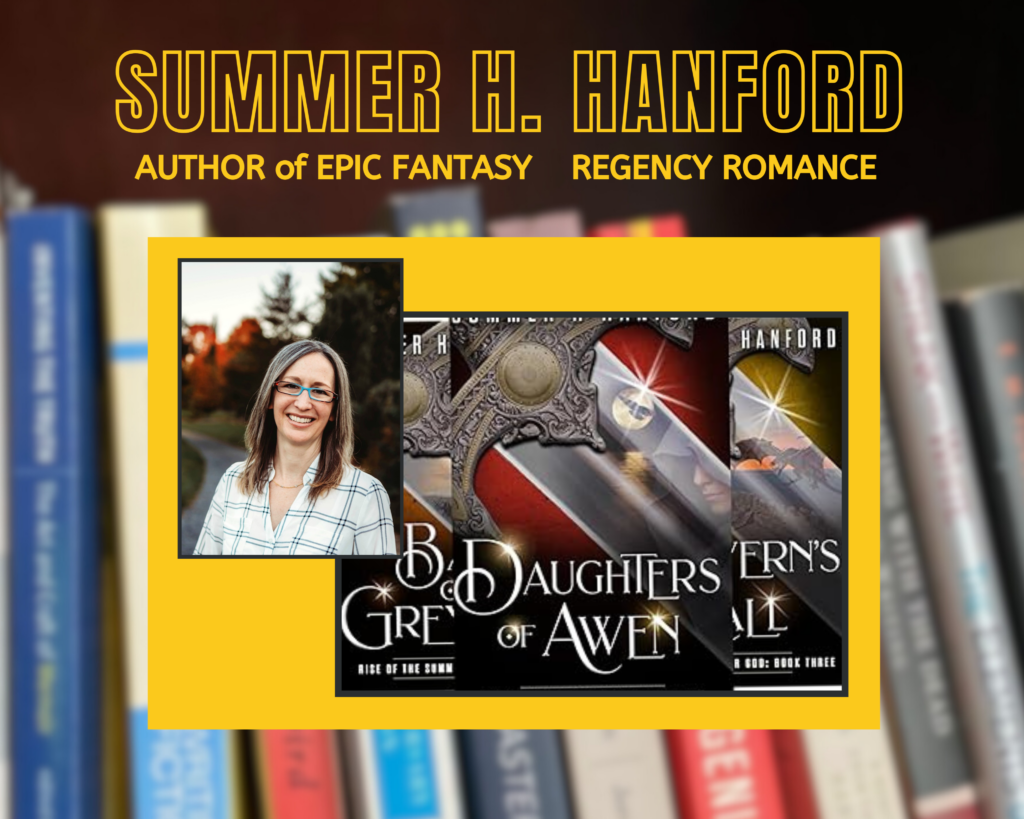
Summer Hanford crafts worlds across multiple genres – from Epic Fantasy and swashbuckling Historical Romance to bestselling Pride and Prejudice retellings. Check out her latest series, The Summer God Adventure, featured in this episode. She lives in the Finger Lakes Region of New York with her husband and compulsory, deliberately spoiled, cat. The newest addition to their household, an energetic setter-shepherd mix, has been trying, and failing, for six years to gain acceptance from the cat, but is adored by the humans.
You can connect with Summer via facebook, Bluesky, X, Instagram, and TikTok.
Episode Transcript
Renee K Nelson: Hello, everybody, and welcome to another episode of Words to Write By. A workshop episode.
Kim Smuga-Otto: A workshop episode.
Renee K Nelson: Oh, these are great.
Kim Smuga-Otto: Yes. Today, our guest is Summer Hanford, and she is the author of an epic fantasy series called Rise of the Summer God. Welcome, Summer. Hi, you guys. Thank you for having me here. Yeah. Do y ou want to tell us a little bit about your epic fantasy writing?
Summer Hanford: I would love to. The Rise of the Summer God series is my second epic fantasy series. It is not named after me in any way. It is named after the plot of the series. It just happened to be that way. My first series, Thrice Born, was published 2012. It’s a five-book series through an indie press. So it’s 11 epic fantasy books over two series, and they’re both completed. So I have gotten to the final battle several times.
Kim Smuga-Otto: Yeah. So we’re reading a book that’s based on Joseph Campbell’s Hero with a Thousand Faces and his idea that all stories have these steps that go through it or stages. And the stage we were talking about our last podcast was approach to the innermost cave. So we’re going to talk about all the stuff that builds up to the final battle because epic fantasy is all about final battles, right?
Summer Hanford: Definitely. It has to be epic.
Renee K Nelson: Yeah.
Kim Smuga-Otto: It also helps if it’s long, too. That’s how I always determine if something’s an epic fantasy, if it’s got swords and stuff on the cover and really thick bindings. The logic works the same with poetry. Epic poetries are also very long. Very long. Yeah. That makes sense. So like you said, the major battles of an epic fantasy is what the whole book’s about. How do you structure? How do you see your fantasy novels structured? Do you use the hero’s journey?
Summer Hanford: I do not consciously use The Hero’s Journey. I have done research into it. I did not read but watch Joseph Campbell on tape when I was younger. We had a whole set of him talking about all kinds of things that we used to watch. I don’t know why. Probably because we watched a lot of PBS. You’re gonna figure.
Kim Smuga-Otto: In my household, we used to record the Disney Family Sunday movies, and then my mom would plop them in. So, like, I have seen Mr. Boogity how many times?
Summer Hanford: Well, that was our household rule. Kids could only watch TV if they were watching PBS. Nice. That was the rule. What was the rule? A lot of British television.
Kim Smuga-Otto: One time I caught a bit of the Tripod series. Oh, that freaked me out bad. Anyway, so… With a bit of a tangent. You have imbibed the concepts of the hero’s journey. And in our podcast, we were talking about how you got the regular kind of adventures once you get started, but then at a certain point, things get serious and you start building things up to that final stake. And then according to this, the big battle isn’t necessarily the climactic battle. There’s not almost like more than one. So do your books have like more than one huge battle in them or how does that work?
Summer Hanford: Definitely, especially with the first series, there’s an adventure that wraps up each book that brings us closer to finding out who the true villains are, who we really have to deal with if we’re going to fix the world. We also have to ramp up to figuring out how we actually could fix the world, what the grand issues are. What I did think was interesting is I’d never thought about it until you invited me here. But in both of my series, the main characters literally have moments when they go into caves. That’s awesome. So in the first series, it happens in the third book, the hero has to go into, actually, I believe he has to go underwater. And swim down a tunnel, you know, and can barely make it before his lungs explode and come up in a cave and then fight a major battle.
Kim Smuga-Otto: Wow.
Summer Hanford: Because these evil people were lurking in this cave, creating more evil. So that is not the final battle of the series, but it is the epic battle of that book. So yeah, he literally has to go through a cave.
Kim Smuga-Otto: I mean, I’m wondering how much we’ve internalized. This Joseph Campbell stuff, you know? Or maybe just caves work really well for this sort of thing.
Renee K Nelson: Yeah. What made you decide to use a cave?
Summer Hanford: Well, in that book, the villains were hidden somewhere in the castle. And it had Roman-style baths in the bottom that were natural formation, which is why the castle was built there in the first place. You know, the hot steam baths. So it made logical sense that there’s another cavern hidden somewhere beyond the baths. the entrance through the baths, but cloaked by magic. And of course it made comedic sense to make it in the women’s baths because the hero was a man, a young man. He had his first girlfriend and everything. So, you know, it just made a lot of sense to make him have to go through both an embarrassing trial and then physical hardship and fear. That’s why a cave in that one specifically, it just seemed to make, plus caves are scary. Especially when you combine them with water. T hat’s scary.
Kim Smuga-Otto: So I think you’re touching on a couple of things for my next question, which was some examples in which you used the approach to the cave or this phase to build tension, to put things in place. Can you think of any other things that you would throw in to your books to increase the tension or test the hero before the final battles?
Summer Hanford: Definitely. You know, it also… It’s supposed to be more of a metaphorical cave, right? Going down into your soul. I do know that part of the idea is that the character goes into the cave and is reborn better and stronger and more able to face the final challenge. On an emotional level, I actually don’t prefer to do that because I like to set up actual emotional distress before the final battle. I feel like that raises the stakes because the character can have thoughts like, if I die, if I fail at this, the last thing I’ll have said to so-and-so were these angry words. So I actually like to amp up the interpersonal turmoil right before a big battle. I feel like that raises the stakes, especially with relationships, right? The readers have been hoping this whole time that these two people would resolve their anger, their disagreements, whatever their disagreements are. And I put it there like, but maybe they never will.
Kim Smuga-Otto: You know, that’s one of those weird dichotomies with epic fantasies. You have these good versus evil, end of the world battles, but we’re still reading about characters that have very personal issues. So Do you feel like the epic battle is kind of just a backdrop for these emotions? Or do you throw in the emotions to make it so it’s not just a giant battle?
Summer Hanford: For me, the emotions are to make the characters real. I think if the epic battle is the backdrop to the emotions, that’s more tends to be a romantic vibe, which romantic is great. It’s just not what I write. And when I read it, even though The authors are good and I enjoy it. I do find myself thinking, yeah, yeah, but wasn’t there a battle for, you know, just get past all these emotions. You have people to murder. So I think it’s two sides.
Renee K Nelson: Yeah, it kind of distracts the protagonist, right? They’re trying to focus, but they’re having a hard time focusing on killing the monsters because their best friend hates them now because they said this horrible thing. That’s helpful. You’ve given the protagonist like a new desire, which is to reconcile a t the end, which means getting through the monster But that also is to save the realm or whatever. I mean, you know, I’m just talking generally about.
Summer Hanford: Well, they have a personal goal and a world saving goal, right? They need to achieve multiple goals.
Kim Smuga-Otto: Well, if you listen to our previous episode, we’ve been trying to apply these stages to a John Scalzi novel. And one of the problems that we’ve been having is that we’re not emotionally engaged for the characters because the main character of that one, Jamie, there’s nothing too bad happening. There’s no personal stake if they don’t rescue the kaiju. Like, you know, He and his friends are good.
Renee K Nelson: Right. There is no personal stake in anything. And I don’t even know if there’s an emotional growth. Like, I’m not sure. He doesn’t seem upset, too upset by much of anything. It’s just kind of like, what is going on here? It’s very wooden, you know?
Summer Hanford: Yeah, so obviously I don’t want that. So that’s one of the reasons to put in emotional. I’ve also found that I like to ask my characters questions to which I don’t know the answer. For example, in the Rise of the Summer God series, the argument that two of the main characters that have had a love-hate relationship throughout the book, and you’re hoping they’ll end up as friends, one of them is an ends-justify-the-means type of character, and the other one is more like, if I destroy who I am and let everybody I personally love die, what was the point in saving the world? So they have a big argument about that. And then they both go off to try and save the world in two different ways. And then I threatened, of course, that they might die so that they could never be reconciled. But I don’t know the answer to that question. I don’t know if the ends justify the means.
Renee K Nelson: Right. It leaves it open-ended.
Summer Hanford: That does come out open-ended. Spoiler, they do save the world. So I don’t know which of them was right. I think that it’s up to the reader to decide.
Kim Smuga-Otto: When you’re writing your stories, do you conceive of the epic battle first? Like maybe not all the details, but like you know where the showdown is going to happen and you write up to that point? Or do you kind of write along and then it pops in your head like this is how it’s all going to come down in the end?
Summer Hanford: I am one of those writers who knows the end of the story. I know that some people like to almost to go along for the ride with their characters. I don’t do that. I’m much, much too much of a organizer. Maybe some people would say a control freak over my characters, but yeah, I know where the story’s going. That is not to say that there can’t be some changes along the way if something really doesn’t fit. I have definitely written scenes that I loved that I had to take back out of a book because it just didn’t make sense anymore. I thought it was going to go exactly here, but it kind of zigzagged around it to get to the end but yes i know what the end is and i like that because i can do more foreshadowing and put in more hints because that’s a good way to ratchet up tension drop little hints along the way of who might be good who might be evil i definitely want the reader to get to the end and be like oh i should have seen that coming if there’s a twist and who’s who the bad guy is.
Kim Smuga-Otto: So after giving an emotional stake to raise the tension, what’s your favorite little technique to just amp up the tension before the end?
Summer Hanford: I actually put a lot of thought into things like sentence length, paragraph length, chapter length. And once we get toward the end and the final battles, all of those things get shorter. Description is more out there. I mean, you want description. You’re trying to evoke as much emotion as possible. But I work really hard at compact description. There’s more action, more dialogue, less description. And everything just goes quicker, shorter sentences, shorter paragraphs, definitely shorter chapters. In The Rise of the Summer God, the final battle takes place in two different places, two different fronts. And so you want to be able to switch back and forth pretty rapidly, you know, do that horrible thing where somebody gets a sword through their chest and before you can find out if they live or die from this wound, you switch to a new chapter and the other part of the battle, you know, that thing that authors do to readers.
Renee K Nelson: That was totally not what I thought your answer would be. Not that I had like a clear idea of what your answer would be, but it was clearly not sentences and paragraph length, but it makes so much sense on another level. That was a really great answer.
Kim Smuga-Otto: What did you think I would answer?
Renee K Nelson: I don’t know. Well, so when we’re reading the book, this Christopher Vogler’s The Writer’s Journey, right? It’s based on Joseph Campbell. So he talks about all these ways that the hero prepares for the cave. You go to the damn tavern and you, you know, you get your gear and you try to get clues. He’s mentioned things where, you know, you like kiss your sweetheart goodbye one more time, just in case you don’t come back. Whereas with yours, you start a fight. So
Summer Hanford: I would make them start an argument.
Kim Smuga-Otto: Yeah. Right. Or you reorganize the parties or someone turns out to be, you know, some, someone’s alignment changes
Renee K Nelson: Or you wear the skin of your enemies, you know, you put on their armor and you sneak your way in somehow.
Summer Hanford: I do those.
Renee K Nelson: He bases it a lot on like screenwriting. So a lot of this stuff is like outward stuff, right?
Summer Hanford: Right. And I do do those things. One of the main characters who was going to have to engage in a battle, he had to get a magic shield and get a magic sword. The shield actually didn’t end up being a shield. It’s part of a whole nother sub quest. He has to take it and get it transformed into a chest guard. That’s so cool. But yes, they did do that preparing and definitely a little bit of the fighting training montage going on.
Renee K Nelson: You did a montage?
Summer Hanford: I don’t know if it comes across as montage-y when you’re reading it, but yeah, it’s definitely a montage. I mean, if you put it on screen, it would definitely become a montage. It would be shots of him training with several different people.
Kim Smuga-Otto: When you’re writing dual multiple point of views and you have two characters that are on their own kind of journey, Was it hard to time it right so that they all arrived at those two battles at the same time? Did you have to go back and forth? Was it straightforward?
Summer Hanford: It is sometimes difficult because I like to have at least two things happen in each chapter, meaning two things that are either relevant to the overall plot or to the emotional arc of a character. Another friend of mine who’s a writer said this too. So I don’t know if we absorbed it from somewhere or if we just came to the same point, but two significant things, s o the chapter’s not just filler. It’s not just a pleasant description. People camping for the night. Something has to move the plot forward, either physically or emotionally or both. So if my timing’s not lining up and I have to add another chapter from one of the points of view, I have to slightly adjust the plot and twist it and turn it. But that usually ends up making for a better book, in my opinion. Usually, by the time I think of more plot points to add, it’s like, that should have been in there from the start. I don’t know why I didn’t have it in there before. If you’re going to have a point of view character, they need to have enough things to do and they need to go through enough emotional changes of their own, right? So… They probably needed that extra thing, whatever it was, to happen to them. The last book, The Rise of the Summer God series has, I think, four points of view by the final book, four or five. I forget. I told myself the next series is going to have two, two points of view. That is it. I’m not doing that to myself again because it was a lot. I had, you know, all the chapters arranged and you’re dragging them around and making sure you didn’t mess up the timing.
Kim Smuga-Otto: Yeah, that’s only a giant diagram and stuff on the wall to map everything out.
Summer Hanford: Yeah, maybe I can make this person get captured sooner. But how does that affect? Yeah, it was it was a bit of a pain, I have to say. My first series had one point of view character the whole time. This is my first series, and I thought that was the best way to go. And it definitely made it easier to write.
Kim Smuga-Otto: So here’s a question. You eventually had four or five points of view, but the original characters, the siblings that start off the story, continue all the way to the end, right, of the series?
Summer Hanford: To fully answer that question would spoil some things in the book. I don’t know how fully you want me to answer.
Renee K Nelson: Right. Who survives and who doesn’t.
Kim Smuga-Otto: But anyway, so you’ve got six books and they all have to have climactic battles and they all have to be bigger and bigger and bigger stakes. So how do you come up with raising the stakes for all these books as you go along?
Summer Hanford: Well, one thing I do that I consider almost cheating, but I also think a lot of fantasy authors do it. It’s one of the reasons I start with young characters. Okay. Because they’re learning about the world at the same time the reader is, it makes it easier to put in information without information dumping because the character is learning it for real in real time. So you’re not just telling it to the reader and it makes it so you can keep expanding their knowledge of the world and therefore the plot can get bigger and the number of enemies can get bigger. So I use that.
Kim Smuga-Otto: Because they’re getting older, like the stuff, you know, I hate to go back to Harry Potter, but you know, the original Harry Potter, like he had to do hardly anything to to finish right exactly because they were really young but you know as they aged up challenges got bigger
Summer Hanford: Oh yeah once you know that that we fantasy authors do that you can see it really easily we do it all the time… as i said it’s almost like cheating it’s
Renee K Nelson: That is so clever i wonder if they do that in sci-fi No, in sci-fi, it’s usually they’re just really ignorant because they go to another world and they’re just new.
Summer Hanford: Yeah.
Renee K Nelson: You know?
Summer Hanford: That’s how they do it in sci-fi, yeah. It’s a whole new world. So same thing. You’re not info dumping. They’re learning about the world in real time.
Kim Smuga-Otto: So do you do that and move them into different locations that they haven’t been in before that have new?
Summer Hanford: Yeah, they start in their village and then they grow. So one’s living in the castle and one’s living in another village, the two siblings that start the Rise of Summer God. Then they start traveling to other dukedoms and other places. Yeah, the world grows physically and mentally. And emotionally, they meet more people.
Renee K Nelson: They grow up, they go through puberty, they fall in love, fall out of love.
Summer Hanford: Yeah, one of them has most of his problems come from falling in love.
Renee K Nelson: Nice.
Kim Smuga-Otto: How do you manage to make each book with its epic battles distinct from the other ones? Is it just the characters have changed, the battles have changed or other things?
Summer Hanford: I guess I don’t find that difficult. If there’s the first book is mostly them fighting growing emotionally so their battles are more emotional getting from being tweens to young adults the second book ends with a big battle that they think is going to set everything right but that was just a little skirmish with only mortals and then we realized that the gods are actually have a hand in this so that battle didn’t put things right and the stakes go up again I’m trying to remember how each book ends. One book, it might be the third one. Yes, the third one is all about trying to find certain people and protect them. Because now that we know the gods are involved, we know a little bit more what they’re after. So yeah, each one, as the characters learn, they face a new problem so that it’s resolved in a different way. The only two that are the same, I’d say, is that there is a big physical battle in the final book, which I guess is somewhat similar to the end of book two, except that there’s way more armies and more players and more magic involved. And it coincides with a whole nother battle going on in a different plane.
Renee K Nelson: Yeah, I’d imagine as the plot thickens, so does the tension. Like there’s so many pieces you’re juggling, right? That it just has to be bigger and better and scarier.
Summer Hanford: It does. Yeah, it does. Like the only way you could make it not is if you murdered everyone, kill everyone off. And then you’d be like, oh, no, we’re back to a smaller scale.
Renee K Nelson: There you go. Ta-da! At the end. That wouldn’t be very fun though.
Summer Hanford: Usually I use a change in location and introducing more characters. In the first series, my first series, The Thrice Born, they go to a whole part of the kingdom they’d have forgotten to before and it’s ruled by a sapient horse race who has enslaved the humans who live around them to do their bidding. Obviously, it’s going to be a whole new ending epic fight to fix that.
Renee K Nelson: I mean, Robert Jordan used that trick in Wheel of Time. He just kept making the world bigger and they went to new continents and the ships showed up and then people from other continents came in.
Summer Hanford: And yeah, it just keeps getting bigger.
Kim Smuga-Otto: Increase the size of the map.
Renee K Nelson: They increase the size of the map. Exactly.
Summer Hanford: I do usually keep the same map so far. I keep the same map. There’s just parts of it that probably people don’t bother to look at as much. The glossary gets bigger with each book.
Kim Smuga-Otto: Do you have the whole map design from the very beginning or do you kind of add and fiddle with it? Because like I wrote my story with something in my head of roughly what it was, but then I waited till the end and then had my husband make a map for me based on all the stuff that I had there.
Summer Hanford: Yeah, I definitely have a rough outline and then details get filled in. Yeah. I’m actually going to try it the opposite way For my next series, I’m going to get a map made by a professional artist who does maps, and I will let the map inform the plot. I’ll see where my characters are in the world, and that’ll help inform the details of the plot. I mean, I know the overall plot, but… If she happens to put a river somewhere and they’re on one side of it, they’ll have to cross it. I’m going to see how that works.
Kim Smuga-Otto: It’s also like if you if you design a map first, then you can really make places be logical. Like you really have the capital be a port city next to an actual port or you won’t have the middle of nowhere or it would reflect the way humans actually symbolize a place as opposed to the way fantasy authors, you know, have someone travel across the way.
Summer Hanford: Yeah, like there’s often kingdoms in the middle of nowhere with nothing and you’re like, well, then what are they eating and how they have all these clothes and…
Renee K Nelson: There’s portals somehow. There’s a magic portal that’s bringing food in.
Summer Hanford: Yeah. I always tell beginning authors to take a piece of the world that is kind of like what they’re going to do and just flip it upside down or sideways, you know, flip it in a direction so it’s not our world and… just use that as their map so that it follows unless they’re going to redefine the rules of physics which is your world you you do what you want.
Kim Smuga-Otto: I actually looked for places in our world to set parts of the story and just end of it have a map because i had no idea how how far apart things were like how long it would take to get someplace just like i say well google maps how long would it take to walk from here to here.
Summer Hanford: Yeah, that’s a great idea.
Renee K Nelson: It’s fascinating. It never occurred to me that the map was informing the story. I always thought they were written or they were made after the fact. Like, oh, here’s my story. And then, you know, they make the map or something.
Summer Hanford: I think it all depends on the author. But the more world building you do before you start writing, for me, the easier it is to write the story. Because you know what will happen. It’s like you’re playing D&D. You’re in this city. You know what the city is like. You know what your character needs. So there’s only a few things they might do to achieve their goals because you already invented the city and the government. And so you know what’s going to happen.
Renee K Nelson: It would also inform the nature of like approaching that, what the cave is, obviously. And then the approach, like how that character is going to prepare for it. Right. They’re in a town without a tavern. There’s no taverns. to gather information or break some fingers trying to get in, you know, like all that kind of stuff.
Kim Smuga-Otto: But you put the cave on the top of a mountain, they’ve got to climb up that mountain.
Summer Hanford: If you put the cave that leads into the volcano near the top of the mountain.
Renee K Nelson: Wow. Okay. That’s so fascinating. Yeah.
Summer Hanford: Geography is important. I always tell beginning authors that geography is important. Think about it, your geography.
Renee K Nelson: So if you’re not using the hero’s journey w hat kind of steps do you take to structure your book? Like, is it a three-act structure and then, you know, there’s a story arc? Or do you just write it out and it just, you’re just naturally like a tension person? Like you’re like, well, you’re always looking for drama. So it’s easy to like conjure up the drama.
Summer Hanford: No, I am a big fan of the three-act structure. I just expand it for the series. I always use Star Wars as an example, even though it’s It’s sci-fi, not fantasy. The three original, well, originally made Star Wars movies, right? We’re learning about the world. There’s some trouble. Movie two, everything goes horribly wrong. Everything sucks. And movie three, finally, the good guys, you know, figure out what they need to do. They find the right tools and they blow up the Death Star.
Renee K Nelson: Again.
Summer Hanford: I think that’s how it goes. I don’t know. Maybe that’s a movie too. I forget. I haven’t watched them in a long time. But I’m a big fan of the three act things. You set normal. You have the exciting incident. So now your characters can never go back to normal. I always try and really stress that. Never. They can never go back. They can only go forward. Even if their obsession is going back. Like, oh, that famous time travel book where his whole obsession is going back to bring his wife back to life. But anyhow, you can never go back to normal.
Renee K Nelson: Yeah.
Summer Hanford: But even if your obsession is going back to normal, you can’t go back there because whatever the incident was, you can never go back.
Kim Smuga-Otto: Right.
Summer Hanford: So then you try to do something to fix things and the characters have to think, we’re on the right path. We’re going to fix things. Whatever they do, it doesn’t end up working. And now they’re in more trouble than ever. And so you do that as many times as it takes to get to the end of the series, really. I like to structure each book that way and the whole series overall that way. But as I noted, I’m very structured in my writing. I like to structure it.
Renee K Nelson: Okay, another question. So on our podcast, kind of our shtick is that we read these writing advice books and then we critique them and then we talk about the advice. Do you have a favorite writing advice book and why?
Summer Hanford: I do not have a favorite writing advice book. I have read Stephen King’s one, of course.
Renee K Nelson: Did you like it? Was it helpful?
Summer Hanford: It was helpful in getting you to think about some particular things. Okay. Like adverbs.
Renee K Nelson: Yes, this adverb controversy. Yes.
Summer Hanford: I have found that all advice should be taken with a grain of salt. One book said you should never use had. You should never use the past tense and you should never use had. And in my older writing, you can see that reflected like the strained writing to try and get things clear without using that three letter word. There was that. I had an instructor who said, don’t ever use that. If you’re using that, your sentence and structure, et cetera. So even now, sometimes when I send my books to edits, the editor will come back and be like, there should be a that there. Like that sentence is just weird without one because I don’t even notice I’m doing it because I tried so hard.
Kim Smuga-Otto: Shout out to my husband because he puts that in a lot of my writing. In my head, I read it in such a way that I don’t need it. Yeah, but that’s because I know what the sentence is. But when someone else is reading it, they need that that to… They need the that.
Renee K Nelson: I will admit that I have removed that. I do remove the that.
Summer Hanford: Oh, I’m sure we use too many that’s. I’m sure people, especially starting out, use too many that’s and too many had’s and too many L-Y words. But yeah, all the advice… Books I’ve read, I’ve found you should definitely listen to them, but then you should also stop listening to them.
Renee K Nelson: There’s such a thing as too many craft books, except for the podcast, because that’s what we do.
Kim Smuga-Otto: So before we go, can you tell us where people can find your books?
Summer Hanford: You can find my fantasy books at any bookseller, at Barnes & Noble, Amazon, Kobo, Google Books, iBooks. Wherever you want to go, they are available wide, as we say, in publishing.
Kim Smuga-Otto: Thank you so much for setting up the time for us to do this interview.
Renee K Nelson: Yeah, this was really informative. I feel like I got a few craft tricks out of this one.
Kim Smuga-Otto: You’re going to read the next epic fantasy book a little different now that you know that they’re going to start off as kids?
Renee K Nelson: Yeah, definitely. I’m going to look at the map a little closer, too.
Summer Hanford: Well, thank you guys. Thank you for inviting me on. I really enjoyed it.
Renee K Nelson: Awesome. Great. Well, it was nice seeing you again.
Kim Smuga-Otto: Yeah. Yeah.
Summer Hanford: It’s good to see you too.
Have you checked out our Hero’s Journey Study Guide? Do you appreciate the Snark Notes (aka, show notes but written under the influence)? Words to Write by is a two woman passion project. A little support will go a long way. You could also drop us a line and let us know how you’re enjoying the podcast.

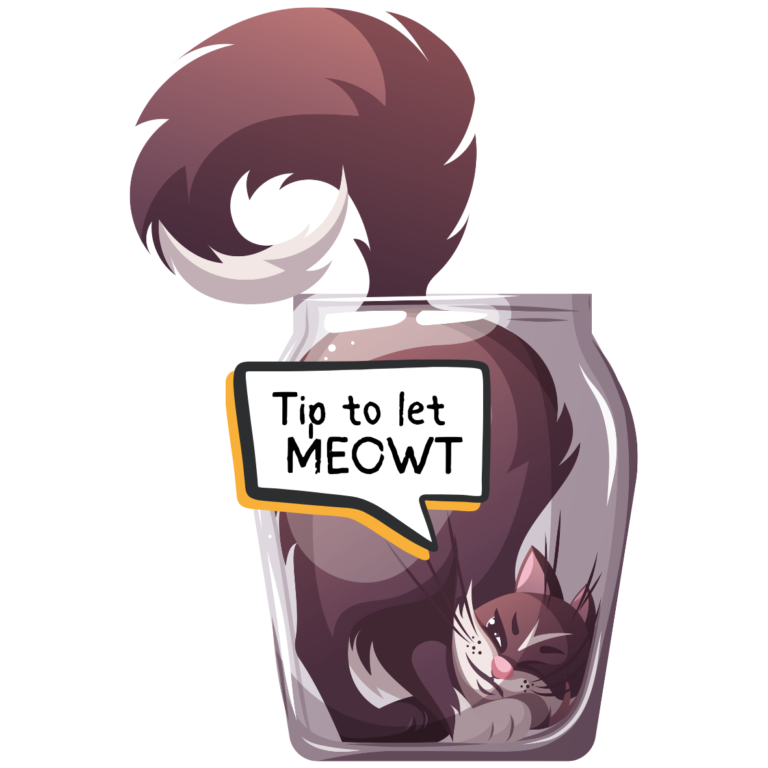
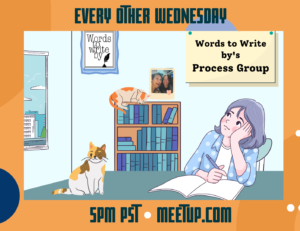
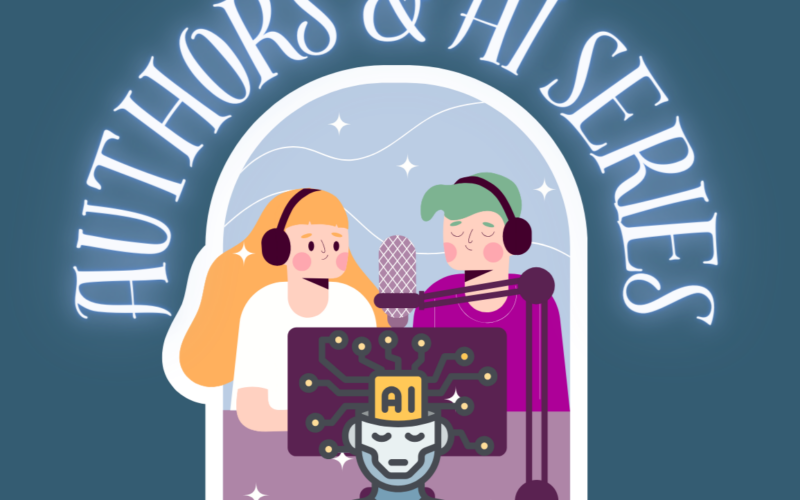
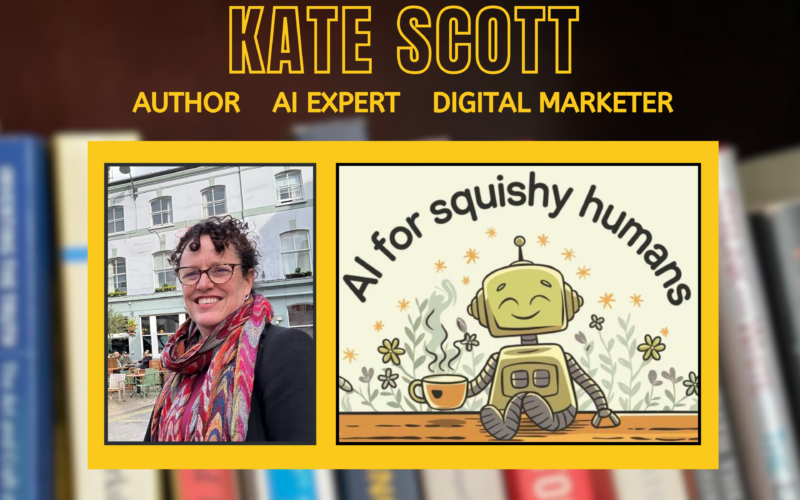
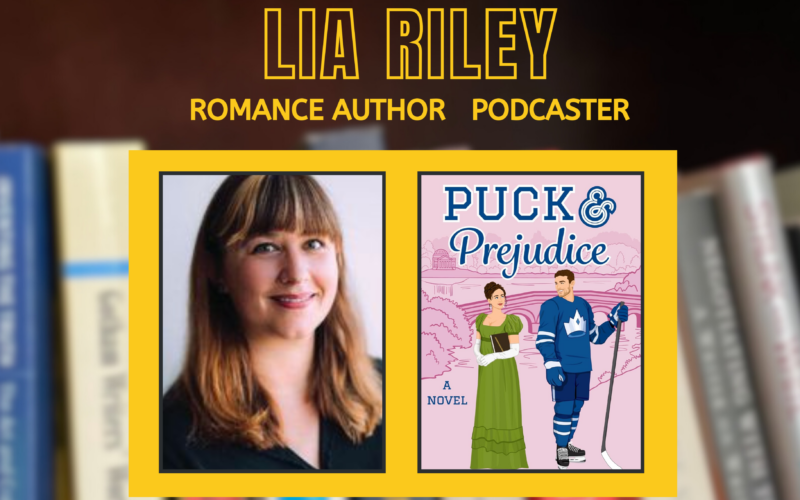
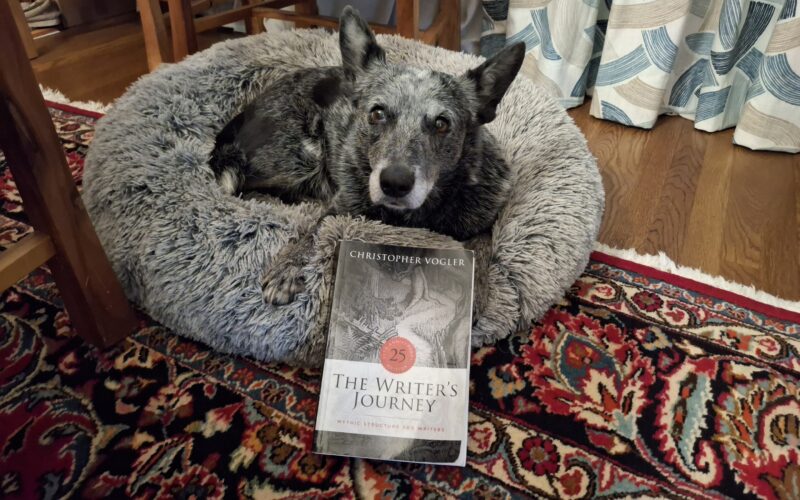
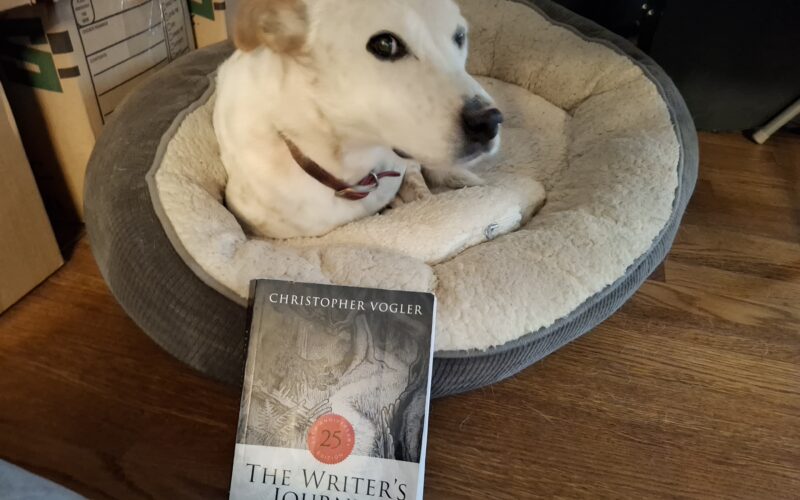
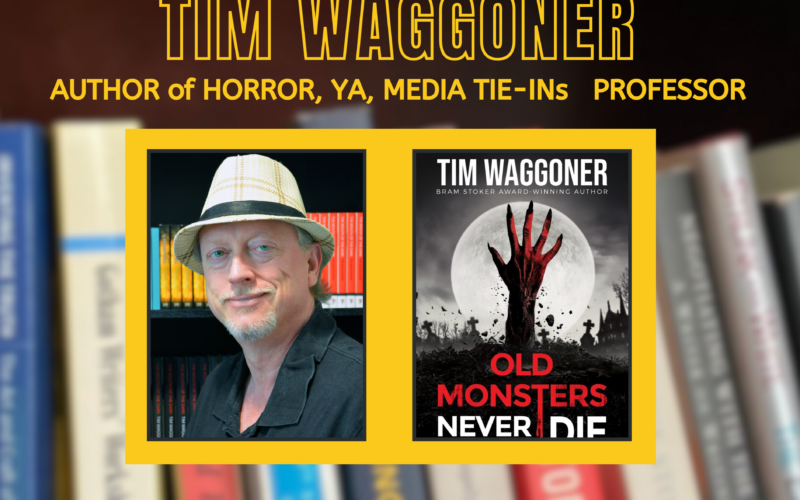
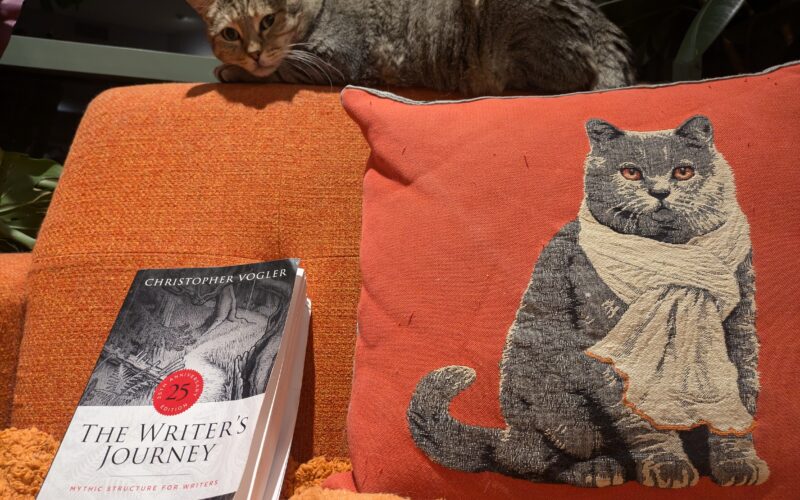
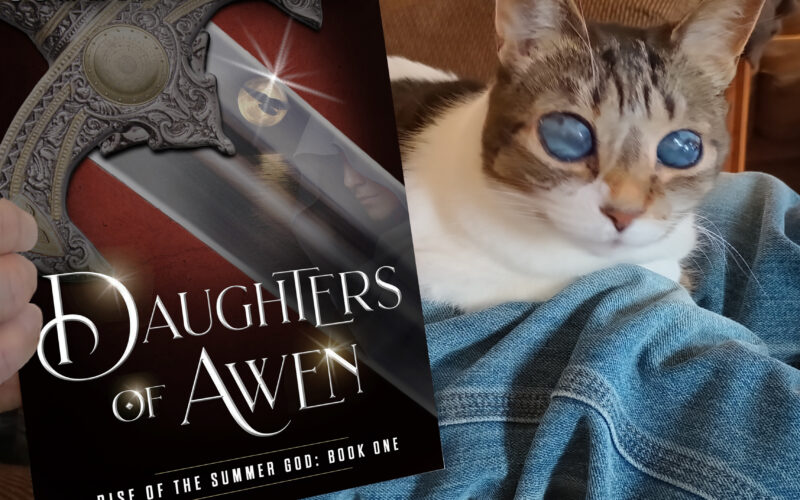

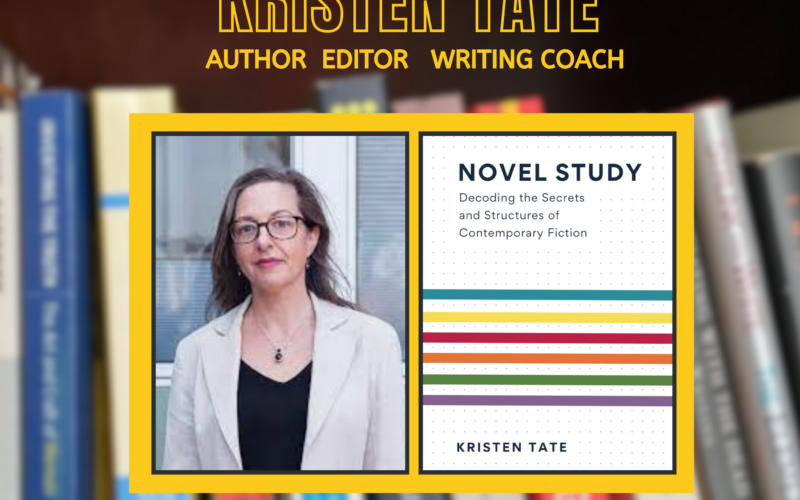
Not Your Usual Words to Write By: The AI Podcasting Challenge
Authors & AI SeriesEpisode 7: Not Your Usual Words to Write By: The AI Podcasting Challenge! Is nothing sacred? After exploring how AI might steal our writing jobs, we’re...